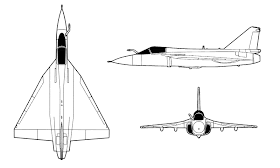OTTAWA, Ontario, June 1, 2010 -- The Boeing Company [NYSE: BA] and Canadian industry partners today announced the launch of a new research and development consortium aimed at strengthening Canada's competitive position in the manufacturing of advanced composite materials for aerospace and other industries.
The Canadian Composites Manufacturing Research and Development consortium (CCMRD) brings together major aerospace companies and small- to medium-sized enterprises to develop and transform the latest technical and academic knowledge into practical solutions that will enhance Canada's global competitiveness.
"A virtual R&D center of this type is much needed in Canada," said Anoush Poursartip, CCMRD chairman and Research director for Convergent Manufacturing Technologies, a member company. "The CCMRD will help to advance the technological capabilities of Canadian industry whilst building stronger relationships between Canadian and international aerospace original equipment manufacturers, as well as Canadian material, equipment, component and software suppliers."
The CCMRD was formed in cooperation with the Composites Innovation Centre (CIC) in Winnipeg, National Research Council Canada's Institute for Aerospace Research (NRC-IAR) in Ottawa, and The Boeing Company. Founding Canadian member companies include Bell Helicopter and Avior Integrated Products in Quebec; Comtek Advanced Structures in Ontario; Convergent Manufacturing Technologies and Profile Composites in British Columbia; and Bristol Aerospace, a division of Magellan Aerospace Ltd. and Cormer Group Industries Inc. in Manitoba.
The CIC is responsible for CCMRD administration, with projects to be carried out at member companies across Canada. NRC-IAR will participate as a technology adviser, providing insight and direction based on its leading-edge knowledge of the composites aerospace industry.
In addition to financial support, Boeing will provide technical expertise and project guidance through its central research, technology and innovation organization, Boeing Research & Technology. Boeing Canada Operations Ltd. in Winnipeg will take part in CCMRD projects along with other consortium members.
"Boeing's work with the CCMRD is part of our long-term focus of working together with industry, universities and research organizations to advance Canada's role in providing high-technology, high-quality materials and components for the aerospace industry," said Pete Hoffman, Global Research and Development Strategy director for Boeing Research & Technology.
The CCMRD is in line with Canada's Industrial & Regional Benefits (IRB) policy and an integral part of Boeing's IRB program associated with the Canadian Forces' acquisition of 15 CH-147 medium-to-heavy-lift helicopters. Canada's IRB policy requires prime contractors, such as Boeing, to make investments in the Canadian economy as a result of winning defense and security contracts with the Canadian government.
"Through CCMRD, we're bringing together Canadian companies of all sizes to develop unique capabilities, enhance the skills of Canada's work force, and increase competitiveness for continued growth in the global aerospace industry and into new markets," said Gwen Kopsie, International Industrial Participation director for Boeing Defense, Space & Security.
Boeing has been a major contributor to the Canadian economy since 1919, generating approximately $1 billion in business annually. The company employs highly skilled workers in Nova Scotia, Quebec, Ontario, Manitoba, Alberta and British Columbia in support of its commercial and defense business units. Canada also is home to one of Boeing's largest international supplier bases, with more than 200 suppliers in every region of the country, providing a diverse mix of high-value goods and services to Boeing and its customers.
Boeing Research & Technology collaborates with Boeing business units, customers, suppliers, universities, and other research and development agencies throughout the world to provide a broad base of innovative and affordable technologies for current and future aerospace systems and services.

